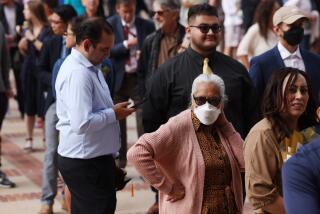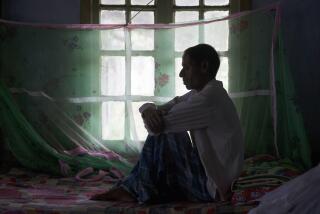Region’s Rates of Diabetes Among State’s Highest
- Share via
Adults in Los Angeles and three other Southern California counties have among the highest rates of diabetes in the state, according to the first study to analyze the incidence of the disease by county.
Overall, one in 16 California adults -- 1.4 million people -- has diabetes, a survey by the UCLA Center for Health Policy Research indicated.
The rates vary significantly depending on the age and ethnicity of the population, according to the study, which was released this week. Ten percent of African American adults in California have been diagnosed with diabetes, compared with 6% of Latinos and 5.6% of whites. Among adults ages 50-64, one in five blacks and one in six Latinos suffer from the disease, compared with one in 12 whites.
In Southern California, Imperial County had the highest rate among those age 18 or older -- 8.7%. That was followed by the counties of San Bernardino, with 7.5%; Riverside, with 7.1%; and Los Angeles, with 6.6%.
“The variation in numbers can be explained by a variation in the distribution of racial and ethnic groups,” said Susan Babey, co-author of the study and director of the center.
Obesity and inactivity often contribute to diabetes; the disease has been linked to genetic factors, poverty, culture and lifestyle.
Bill Releford, a podiatrist who founded the Diabetic Amputation Prevention Foundation, said outreach ought to be tailored to patients’ needs and take into account how they live.
Releford, who is black and whose mother is diabetic, said many African American patients “have to be drawn into a message before they’ll read it. A brochure that says, ‘You can live with diabetes,’ does not express the seriousness of what we’re dealing with.”
He said the message often needs to have a strong emotional impact or personal meaning. For example, Releford said, he sometimes brings in amputees to urge diabetic patients to manage their disease better.
The study said access to care, however, is sometimes difficult for Latinos to obtain, since many lack health insurance.
“We can’t continue to sacrifice our limbs, our eyesight and our health to diabetes,” said Mario Obledo, former California secretary of health and welfare. “We have to fight for ready access to affordable and culturally competent health care and diabetes information.”
Although some Southern California counties were disproportionately affected by diabetes, the study found rates even worse in certain less populous rural counties. That is probably because they have a high concentration of poor people, including minorities, with limited access to health care, researchers said.
Tulare County had the highest percentage among adults, 10.2%; followed by Kings County with 8.8% and Sutter and Yuba counties with a combined 7.6%.






